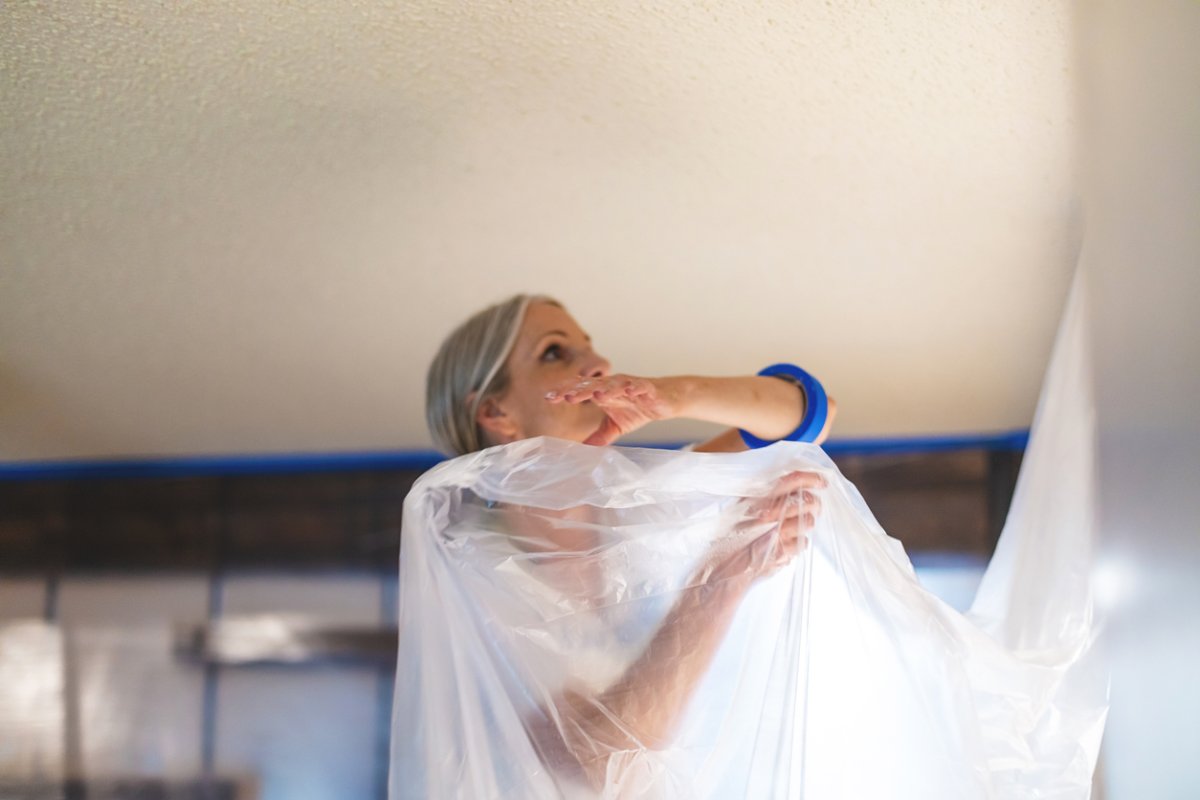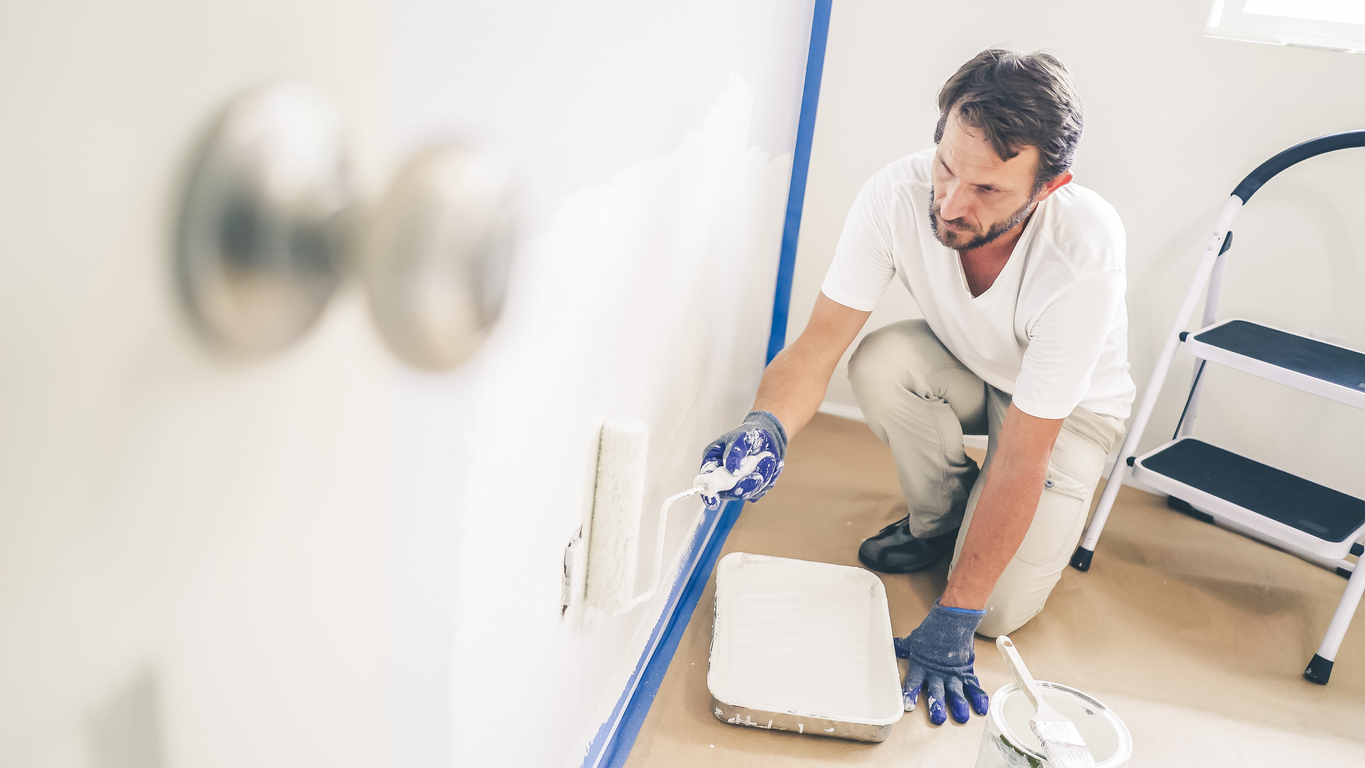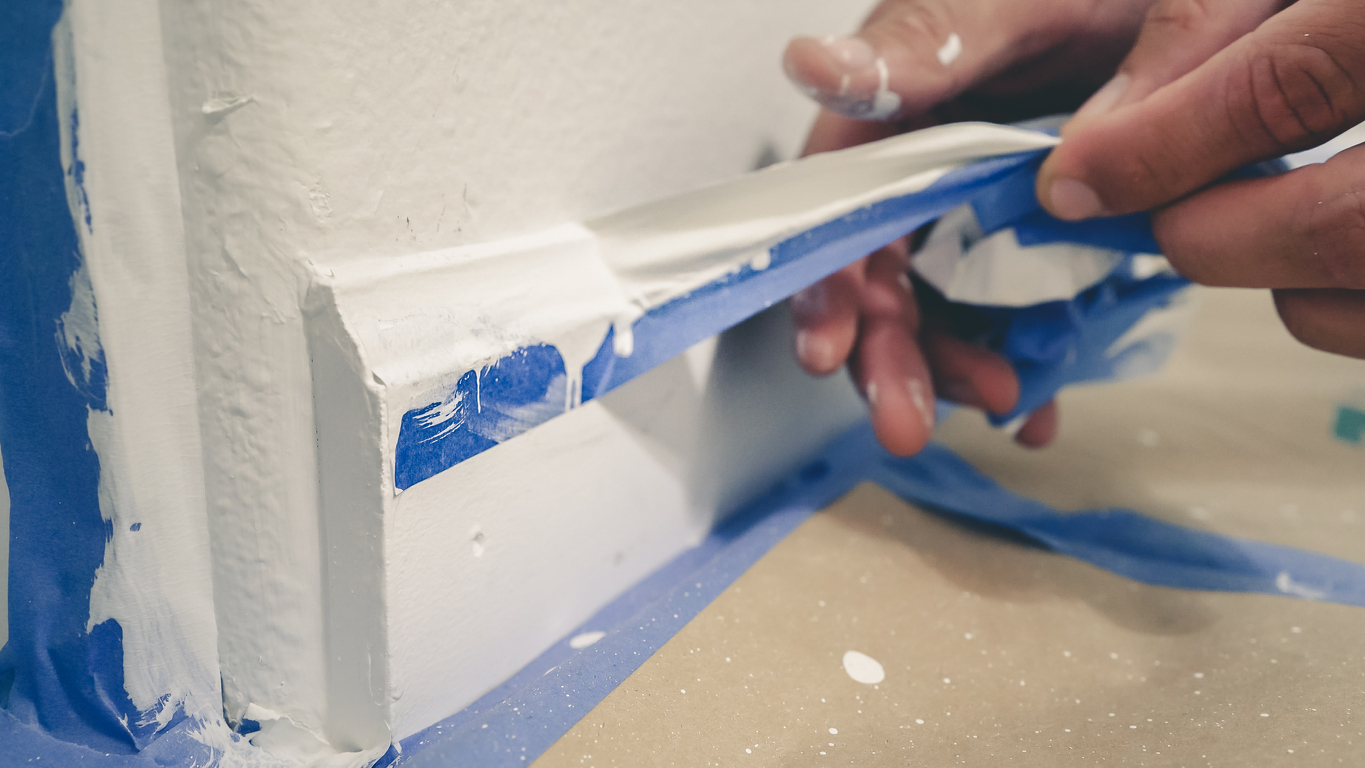

We may earn revenue from the products available on this page and participate in affiliate programs. Learn More ›
Q: I understand that I should use painter’s tape rather than masking tape to get the clean, professional finish I am looking for, but how do I know when to remove painter’s tape so it won’t spoil my work?
A: You’re absolutely right to use painter’s tape. Although masking tape looks similar, painter’s tape has a lower tack adhesive. It’s designed to pull away easily and maintain a clean edge to your painting work. There also are painter’s tapes for indoors and out so you always have the right product to create a professional decorator’s finish.
As you point out, knowing when to remove painter’s tape is a key issue. After taking care to prepare the surface and apply the tape carefully before painting, the last thing you want is to cause problems after painting. There are a couple of considerations and pro tips that will help you get the best results.
Wait until the final coat is dry before removing painter’s tape.
With a wide range of different products on the market, it’s important to read the manufacturer’s instructions about both application and removal. Removing painter’s tape too quickly can splatter wet paint over surprising distances, so in most cases the recommendation is to wait until the paint is dry to the touch. The paint manufacturer should give an indication of the dry time on the can.

Related: Solved! Which Comes First: Painting the Wall or Trim?
If you need to apply two coats of paint, the question arises of whether you should peel any tape between coats and reapply, or leave the tape until the second coat is dry. The latter is usually the best course of action as it would be very difficult to retape precisely. Not getting the second application of tape exactly aligned with the first risks creating a ‘double’ edge to a finished paint job.
Don’t leave tape up too long.
Depending on the surface and the type of paint being applied, the minimum period for leaving the painter’s tape up might be anywhere between 4 and 24 hours. But what happens if it’s not practical to remove it right after that period?
It is vital to check the manufacturer’s instructions. Some products need to be removed fairly soon, but high-quality painter’s tape allows considerable flexibility. Some can stay up 21 days or more. That being said, the longer it stays up, the harder the paint becomes and the more chance there is of it cracking during removal. Long adhesion times may be possible, but planning to remove the painter’s tape as soon as the paint has dried is still the best policy.

Related: How To: Paint Stripes on a Wall
Employ the 45-degree angle method of removing painter’s tape.
Knowing when to remove painter’s tape is 50 percent of the battle, the other half is knowing how to remove it without risking damage to the sharp finished edge you’ve worked so hard to achieve.
Patience is key. Work slowly, pull the tape away at an angle of 45 degrees. Having a large mass of tape in your hands can be awkward, so tear lengths off regularly and throw them away.
Some experts recommend scoring the entire edge that’s been painted with a utility knife (make sure it has a fresh blade). However, this can be very laborious so others suggest keeping a knife handy and score if you notice an area where the paint might have stuck across the tape.
As you work, keep looking ahead a little so you can spot potential problems before they occur. This means working close to the tape so you can see what’s happening. Don’t be tempted to stand on the floor and rip off a whole length along the ceiling. Attention to detail here, as with every other part of the job, ensures a professional paint finish.
